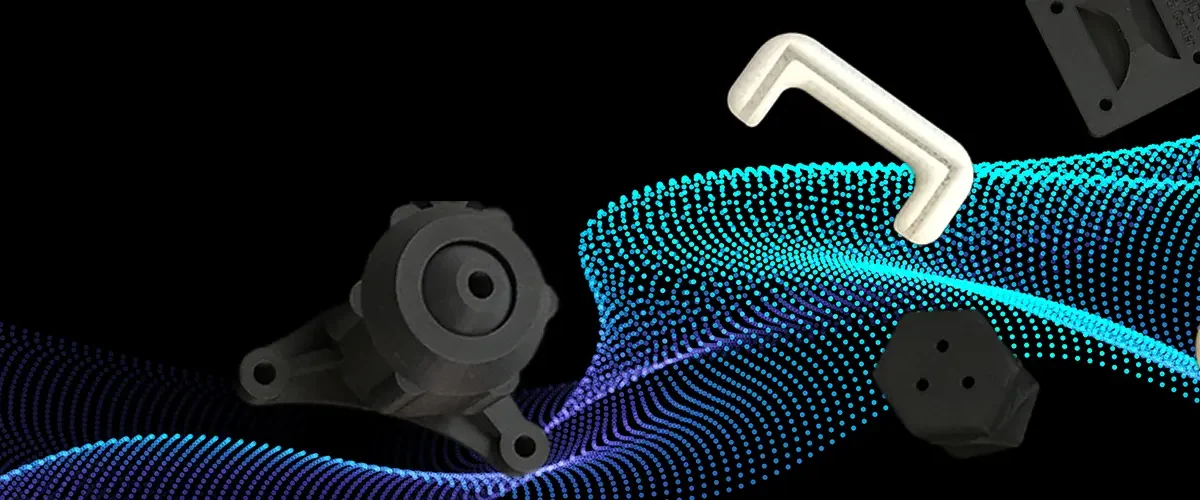
Support for 3D Prints
Blog Article | January 31, 2024
Introduction
Delving into the world of 3D printing, understanding the significance of supports is paramount for achieving impeccable results. In this blog, we unravel the mystery behind supports for 3D printing, focusing particularly on their role in Fused Filament Fabrication (FFF). These supports act as temporary scaffolding during the printing process, ensuring the stability of intricate designs and preventing deformities. Join us to explore when and why supports are essential, their benefits and drawbacks in FFF, and how they impact the quality and cost of your printed parts.
What Are Supports for 3D Printing?
Supports for 3D printing are temporary frameworks generated while printing to stabilize overhanging or intricate shapes. The purpose of these supports is to prevent the material from sagging or collapsing during the printing process. During post-processing, these supports are then removed to leave the final product.
When Do You Need Supports for 3D Printing?
Based on the choice of 3D printing technology, support structures may be needed to uphold the intended geometry of the printed object. When selecting a 3D printing method, it’s crucial to consider the impact of support structures on the quality and cost of your parts.
Supports for FFF 3D Printing
In Fused Filament Fabrication (FFF) 3D printing, a plastic filament is extruded onto a build surface following a pre-defined path. As the material is extruded, it undergoes cooling, resulting in the formation of a solid surface that serves as the base for the subsequent layer of material. Within this form of 3D printing, each layer is created by depositing heated filament threads, which adhere to the threads beneath and around them. If a printed feature extends beyond a 45-degree overhang, it might droop significantly, posing a risk of ruining the entire print. In such cases, the use of support structures becomes necessary to provide stability and prevent deformities in the printed object.
Benefits of Supports in FFF
- Overhang and bridge support
- Printing complex parts
- Print stability
- Reduced warping and distortion
- Improved print success rate
- Removable Supports
Disadvantages of Supports in FFF
- Post-processing is required
- May lead to marks or damage on structure’s finish
- Uneven surfaces on part
- Supports may be difficult to remove leading to damage of part
- Additional costs and waste
Need Additional Assistance With 3D Printing? Saratech 3D Printing Experts Can Help.
Connect With a Saratech 3D Printing Expert Today.

BigRep Supports
BigRep’s Butenediol vinyl alcohol co-polymer (BVOH) support material is a water-soluble filament designed to simplify the finished steps for 3D-printed objects. Specifically developed for dual-extruder printers, the BigRep BVOH works seamlessly with various materials, streamlining support during the printing process. One of the notable features of BVOH is its ability to dissolve easily in water, enabling the clean separation of printed parts from support structures without the need for manual post-processing. It is particularly useful for intricate 3D-printed designs where conventional breakaway support might be challenging to remove after printing. If achieving a flawless surface appearance is crucial, using BigRep’s BVOH results in superior quality with minimal post-processing efforts.
Markforged Supports
Within Markforged’s Eiger software, there is a variety of ways that one can customize supports to produce the wanted product without flaws. Users have the flexibility to activate or deactivate support structures for individual parts. When the Use Supports toggle switch is turned on, the system automatically generates support structures and tool paths beneath any overhanging features that need support for successful printing. For example, with Onyx, supports are necessary for any feature that exceeds a 45-degree angle from the vertical axis.
In addition, Eiger has a Supports Override feature that allows users to override default settings for a part and specify areas where supports should be generated or blocked. Generally, this feature would be most useful when supports could be difficult or impossible to remove after printing, and in the cases where the supports would negatively impact the surface’s finish.

Summary
In concluding our dive into 3D printing supports, we’ve uncovered the pivotal role they play in achieving successful results, particularly within the realm of FFF. From understanding the necessity of supports for overhangs to navigating the benefits and drawbacks of their application, we’ve gone into depth about this topic within the intricate world of 3D printing.
As technology evolves, industry leaders like BigRep and Markforged pave the way with innovative solutions. BigRep’s BVOH offers a glimpse into a future where water-soluble supports redefine the post-processing landscape. In addition, Markforged’s Eiger software empowers users with customizable support tailored to unique printing needs.
The use of supports in 3D printing is not just a technical requirement; it’s an art form. Striking the right balance between stability and design intricacies, supports open up new horizons for creators and engineers alike. Here’s to unlocking the full potential of 3D printing and embracing the boundless possibilities that lie ahead!

